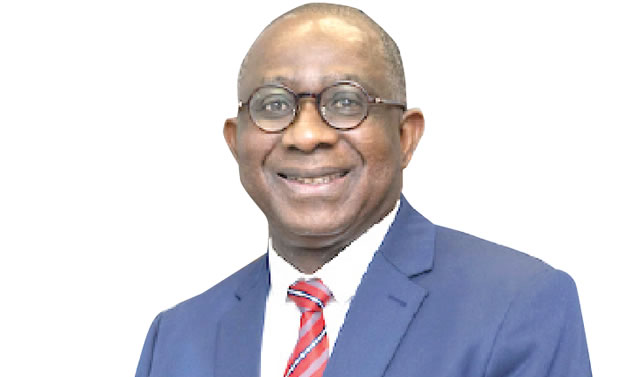
Oyelaran-Oyeyinka, who until recently has been the acting Director, Regional Office for Africa, United Nations -Habitat in Nairobi made this known on Thursday at a lecture delivered at the Africa Social Impact Summit in Lagos on the topic: “From a Fragility Trap to Resilient Economic Development.”
According to him, a low-income trap is a reality for many because nearly 70% of African rural dwellers depend solely on Agriculture for survival.
The don who was also a Senior Economic Adviser, at the UN Centre on Trade and Development Geneva where he coordinated a ten-year review of the performance of least-developed countries, pointed out the fundamental challenges of the African/Nigerian Agriculture system’
He also suggested that for Africa to attain the desired development vision, there will be a need for profound changes in the economic landscape.
He said, “The remedy to the malady of countries caught in a low equilibrium trap, which essentially is a fragility trap is faster economic growth and sectoral change.
“Most African rural dwellers, mostly farmers, in some cases, nearly 70 percent of households make their living from subsistence agriculture. For the most part, and in large swathes of the region, a greater proportion of households derive their livelihoods from subsistence farming from certain important food crops (cassava, beans, plantain, maize, rice, sorghum, millet, cassava, yams, sweet potatoes, etc.) and a few traditional cash crops (coffee, cotton, cocoa, oil palm, sugar, tea, and tobacco).
“The sector is also characterized by low-yield staple food crops on small plots with minimal use of inputs. These farms depend on rainwater, thus subjecting production to the vagaries of the weather.
“The low-income trap is a reality for most people. Households are effectively in quasi-subsistence, a condition that entraps people in perpetual poverty. You may call it a destitution equilibrium: this is a state in which opposing forces of income and expenditure are balanced. The balance of forces makes it so binding that it doesn’t allow poor people to escape it. They never have enough.
“The transition from a low-income economy to a middle-income economy only takes place when a traditional agricultural economy enters the early stages of industrialization. This transition brings about significant changes to the form and contents of production even when the labor-based activity remains unchanged. It takes folks to a different better income level.”
Speaking further, he said, “For Africa to attain the desired development vision spelled out in various documents like the AfDB High-5, AU Agenda 2063, and the SDGs, there will be a need for profound changes in the economic landscape. Many sequential policies and structural changes will have to take place as the nations push toward modernization. The most profound change is that the economy will need to transform from rural-based to urban and from agriculture-based to industry and services.
“Sustainability will demand policies that strengthen linkages between rural and urban areas and induce the shift out of agriculture. Strategic actions to this policy are investments in rural infrastructure, IT/ communication, road and transport that provide the physical linkages and high-quality rural education and technical skills that will provide the tools and abilities for rural residents to fully integrate into the nation’s commercial and industrial sectors.
“The structural solutions will include reducing post-harvest losses. One-third of food produced globally is either lost or wasted. Addressing food loss and waste is critical to improving food and nutrition security.
“Social Sustainability will mitigate risks associated with poor diets: one of the leading causes of death worldwide. Millions of people are either not eating enough or eating the wrong types of food, resulting in a double burden of malnutrition that can lead to illnesses and health crises.
“The future will be defined not by the abundance of natural resources but by human capital, science, and technology and how nations harness them for industrialization. Due to their strong industrial capabilities, rich nations manufacture what poor nations consume.”
He added, “To overcome the BoP in the long run and grow the economy at a fast rate, we must counter import expansion with faster export earnings. More precisely, the export of processed and manufactured products. We have long shortchanged ourselves by exporting raw materials that others use as a basis for wealth generation and employment.
“To make sustainable progress we must target Growth in agriculture (at least by 6% per year), foster the creation of non-farm rural employment and rural industrialisation, and the transformation of domestic (and access to), international markets. With these steps, there is the chance to dramatically change the face of rural Africa on the way to modernization.
“We must specifically address the landlocked Sahelian countries and LICs. These are countries where government revenues minus aid are between $200 and $450 per year per capita, in contrast to the figures we see for South Korea, Malaysia and $4,000 for Algeria.
“We must transform the mainstay Low-level agri-food industry which is the Sahel’s largest economic sector, accounting for a third of its GDP and 75 percent of its employment into modern commercial enterprises. The subregion is a major producer of cotton, cereals, and livestock, with significant potential in horticultural products, oilseed crops, and nuts. All are mostly unprocessed.
“We must break the malady of LICs: which we diagnosed as a stable equilibrium level of per capita income at or close to subsistence requirements. It is a situation where only a small percentage, if any, of the economy’s income is directed toward net investment.





